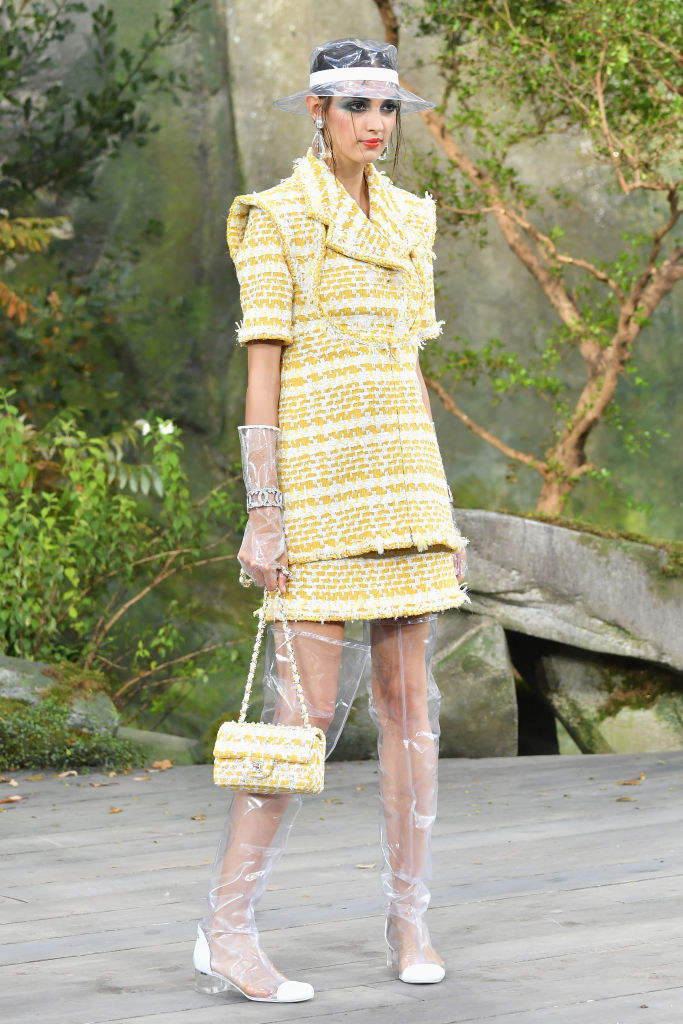According to Harper’s Bazaar, wearable plastic collections will be everywhere next season. Fashion industry’s most iconic brands, like Chanel, Valentino and Fendi, have decided to make plastic clothes a must-have in their SS18 collections. But what could be the true cost of couture houses flaunting these translucent synthetic collections along the runways? Especially when the trend itself is associated with heavy environmental waste in the current cultural climate we live in.
Words: Aleksandra Medina
The plastic trend does seem a bit out of place in today’s more environmentally conscious cultural climate, doesn't it? That’s because it does feel quite bizarre. Plastic has had quite a negative, even cheap, connotation for most of its existence. Think plastic bags, plastic ponchos, gloves, Tupperware…the list goes on and on. Most of us would never associate it with haute couture brands. So the decision for these fashion houses to make plastic trendy is puzzling, but could it be seen in a different light?
Chanel SS18 / Source
Chanel SS18 / Source
Experts are surprised by this decision, not only because of plastic’s cheap reputation, but because of today’s clear trend to become more environmentally friendly. Today’s millennials are involved in environmental issues more than ever. So why have these brands decided to incorporate plastic on the runway?
Valentino SS18 / Source
Well, some suggest that these might be the first glimpses of a fashion revolution. Incorporating plastic on runways might just be the sign we have been waiting for, where designers are making a statement about how blindly people will overpay just for the brand name, without regards for the quality of the material. Isn’t the material, historically and evolutionally speaking, the most important part of the garment? It is supposed to successfully protect and cover your body. So maybe putting plastic on the runway shows both that we are straying away from the fundamental purpose of clothing and that fashion is becoming more and more nakedy. How is a woman supposed to protect her body, if each season she is offered shorter and sheerer options, with more and more holes in them. So why not make a statement and take it a hundred steps further by using completely see-through material?
On the other hand, many hope that this might be a different kind of social movement. An environmentally-friendly-social movement, where we will learn to reuse the plastic dumped in our oceans and meadows. One can hope, that Karl Lagerfeld and Pierpaolo Piccioli will hear our calls to action. Hopefully, a year from now we will be dressing in reused ocean plastic. That would be something I’d pay for.



